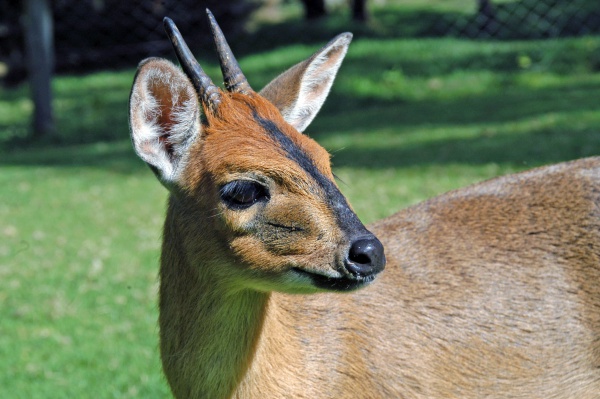Facts About Common (Grey) Duiker
The common duiker, also known as the grey or bush duiker, is a small antelope that inhabits regions of Africa south of the Sahara Desert. However, they are absent from the Horn of Africa and the dense rainforests of central and western Africa. These petite antelopes prefer areas with sufficient vegetation for cover, such as savannas, hilly terrains, and even the peripheries of human settlements.
The coloration of the common duiker can vary widely depending on their habitat, and there are 14 distinct subspecies. They usually reach a height of about 50 cm and weigh between 12 to 25 kg, with females generally being larger than males. Fascinatingly, only the males possess horns, which can grow up to 11 cm in length.
Common duikers breed throughout the year. Following a gestation period of 6 to 7.5 months, females give birth to a single fawn. As for their diet, these antelopes are remarkably omnivorous. They consume leaves, flowers, fruits, and tubers, and will even eat insects, frogs, small birds, mammals, and carrion. They can withstand long periods without drinking water, deriving moisture from fruits during the rainy season.
These antelopes are active both during the day and at night, although they tend to be more nocturnal in areas near human habitation. Male duikers are notably territorial, marking their domains with gland secretions on rocks and branches. In contrast, females tend to favor areas with ample cover for concealment.
The common duiker's success stems from its adaptability to various habitats and its diverse diet, enabling it to thrive in different environments.

 Niger
Niger